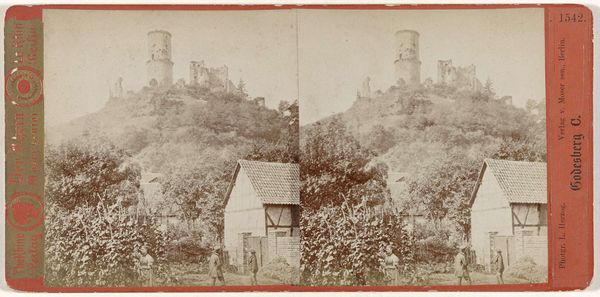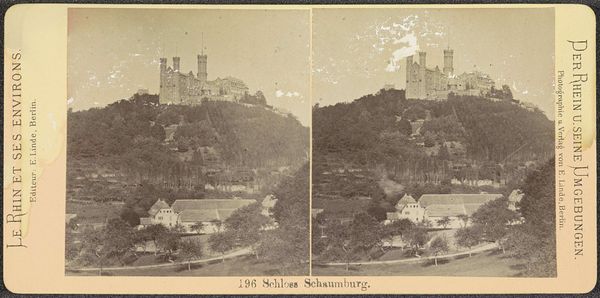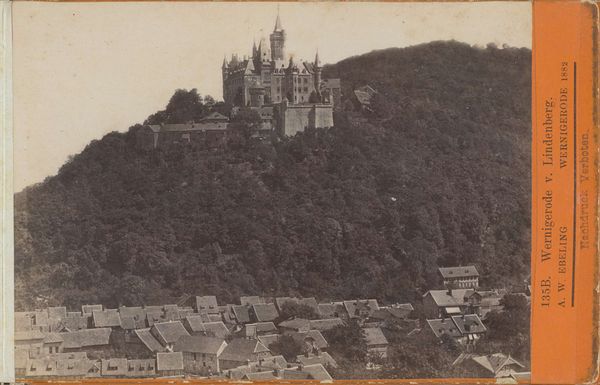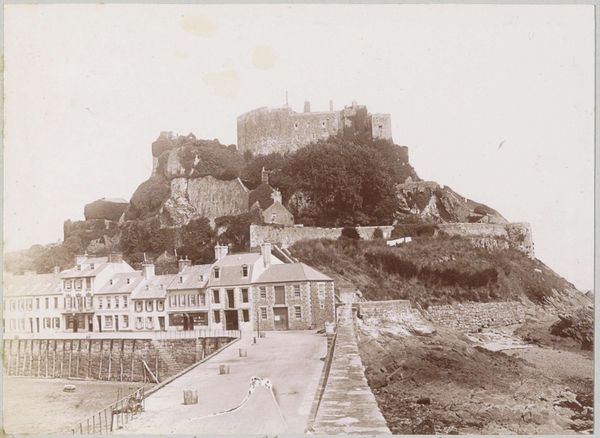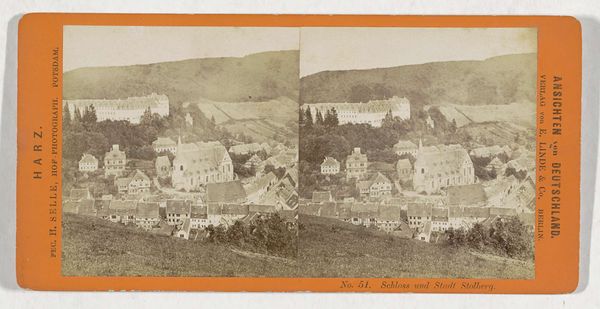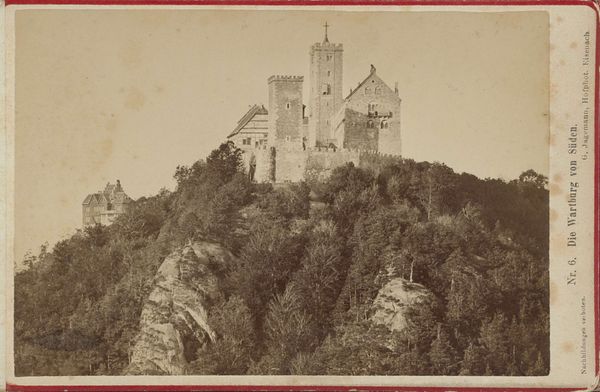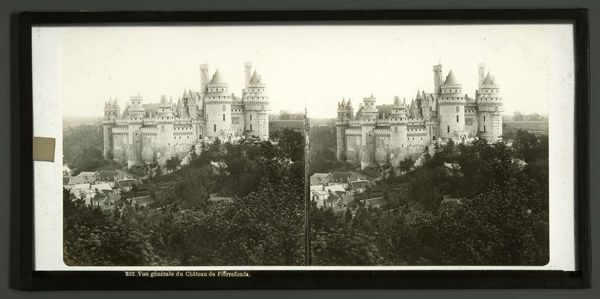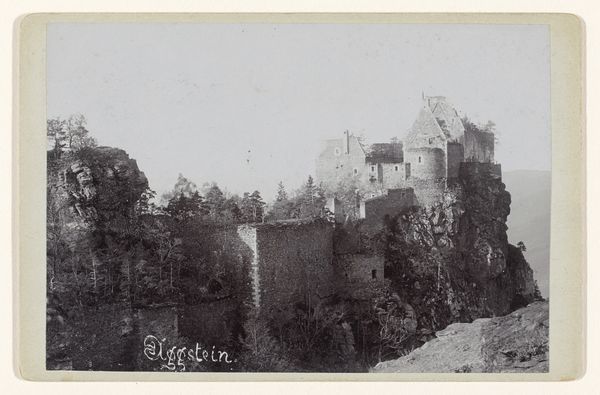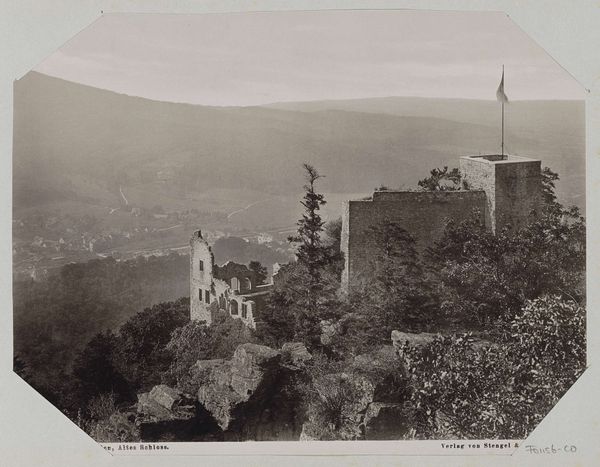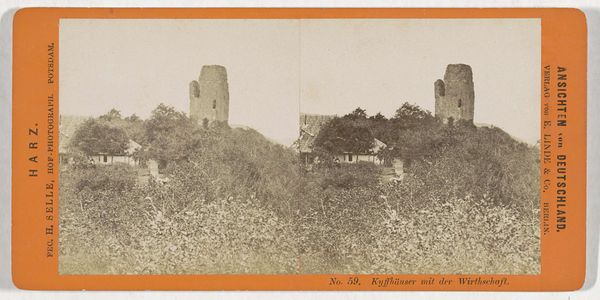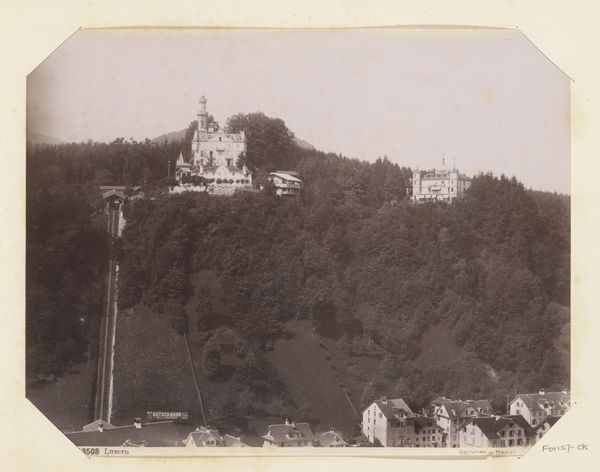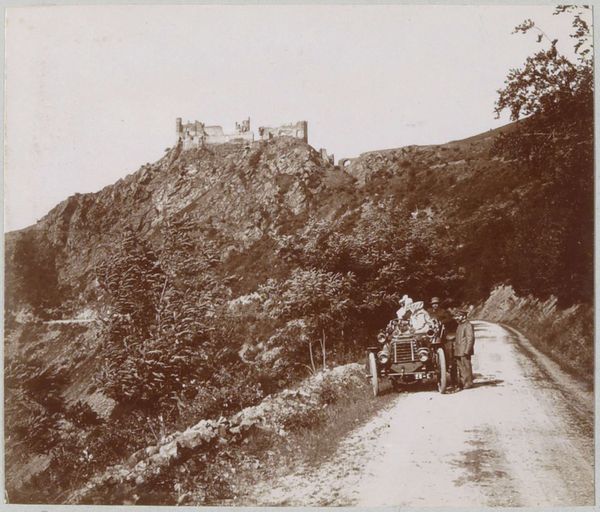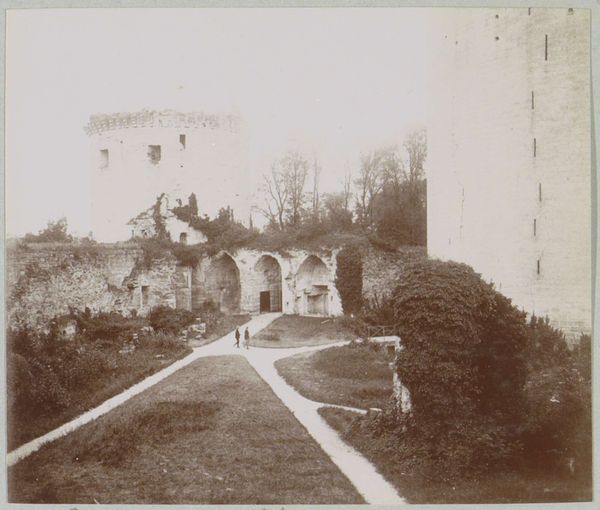
Dimensions: height 86 mm, width 176 mm
Copyright: Rijks Museum: Open Domain
This photographic print of the Ruïne van burcht Reichenberg was likely made using the albumen process, a popular method in the 19th century. It involved coating paper with egg white and then using a negative to create the final image. Notice how the albumen printing process renders a very high level of detail and tonal range, capturing both the imposing architecture of the castle ruin and the surrounding landscape, from foliage to the textures of the stone walls. The production of these prints would have involved a division of labor, with photographers, darkroom technicians, and possibly even assistants to manage the chemicals and equipment. Stereoscopic photographs like this one, with their enhanced sense of depth, were relatively inexpensive to produce and allowed for mass consumption, reflecting a growing interest in tourism and exploration during the period. Looking closely at the image, you can see how the material qualities of albumen printing can carry complex stories about labor, politics, and consumption.
Comments
No comments
Be the first to comment and join the conversation on the ultimate creative platform.
